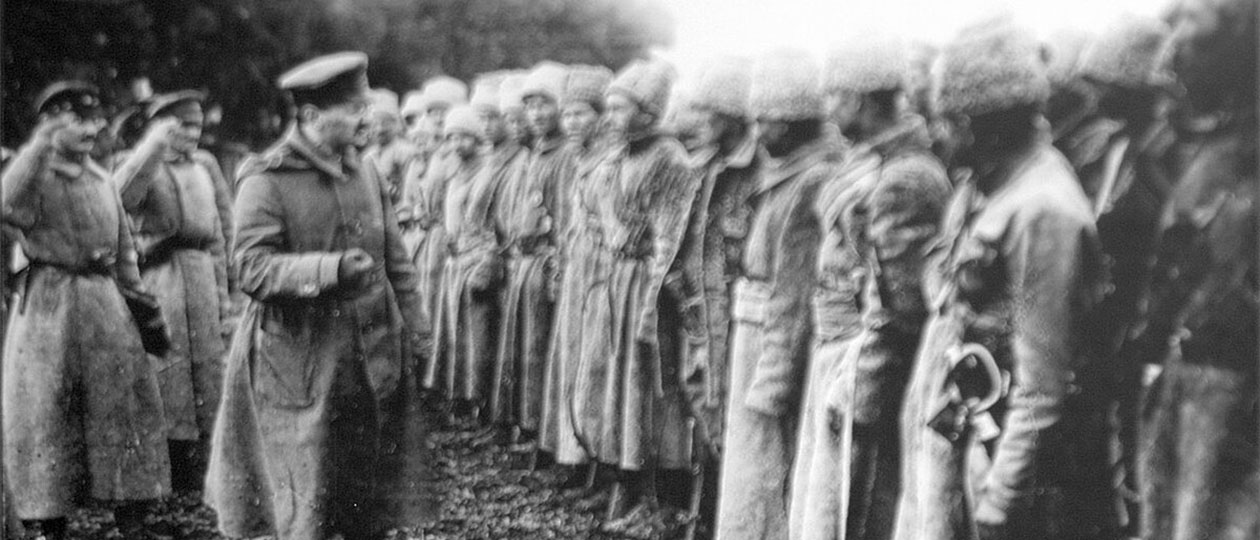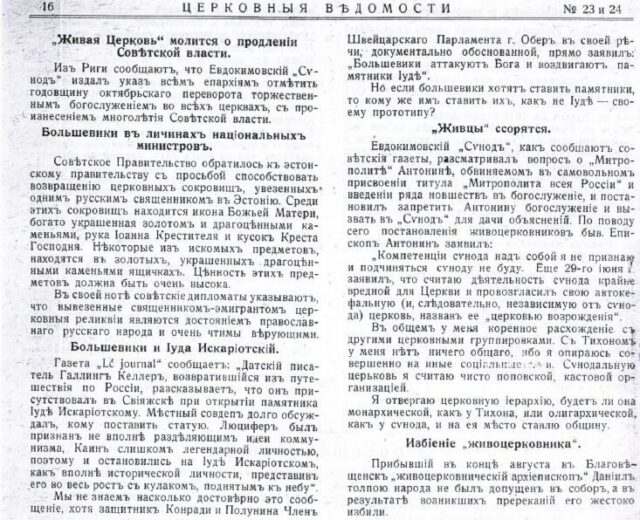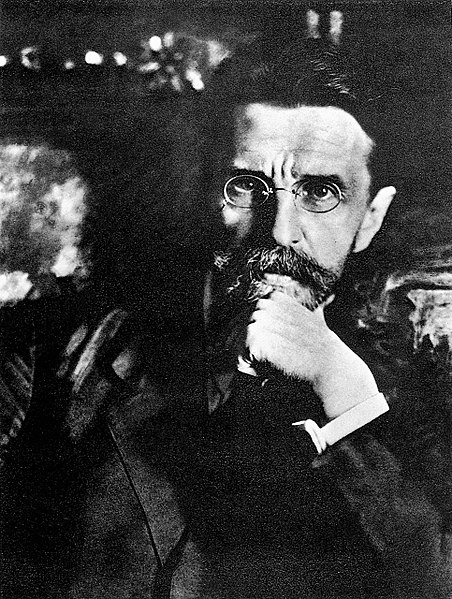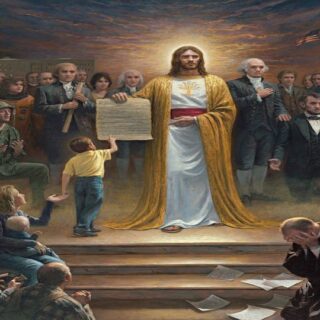
The legend about the installation of the monument to Judas in Sviyazhsk has been known for a long time.
It would seem that enough has been said about its sources, but there are, as they say, details. Quite interesting to pass by.
So, the legend is that after the Red Army soldiers arrived in Sviyazhsk in 1918, they installed there either a plaster or wooden figure of Judas Iscariot with his fist raised up.
In 1918 itself, neither the Reds nor the Whites wrote a single line about this.
The first mention in a Russian publication is found in 1923 in the magazine “Church News”. What kind of publication was it?

The magazine was first published by the Supreme Russian Church Administration Abroad, then by the Temporary Synod of Bishops of the Russian Orthodox Church Abroad, and from June 1, 1923, by the Synod of Bishops of the Russian Orthodox Church Abroad.
From March 15, 1922, when the first issue of the magazine appeared, until September 1, 1930, “Church News” was published under the editorship of the manager of the chancery of the Synod of Bishops of the Russian Orthodox Church Abroad E.I. Makharoblidze.
Who is Makharablidze Exacustodian Ivanovich (Makharoblidze)?
He was born in the Caucasus in the family of a military priest and graduated from the theological seminary and entered the law faculty of St. Petersburg University.
During the First World War, he was the head of the chancery of the protopresbyter of the army and navy. In exile in Germany. In the 1920s and 1930s, he was the secretary of the Supreme Church Administration and the “ruler of affairs” (manager of the chancery) of the Karlovtsy Synod Abroad. Editor of the magazine “Church Bulletin”.
In 1931, he was scandalously removed from the post of manager of the chancery of the Bishops’ Synod of the ROCOR for embezzlement of the money entrusted to him in this position.
It is impossible not to mention the odes that Makharoblidze wrote during the war years on the pages of the publication he edited, “Church Review,” addressed to the leader of the Third Reich who attacked the USSR:
“There are no words, no feelings in which one could express the deserved gratitude to the liberators and their leader Adolf Hitler, who restored freedom of religion there, returned to the believers the churches of God that had been taken from them, and is returning them to their human form” (Church Review. 1942. No. 4/6).
In the 1950s, he was the secretary of the Diocesan Administration of the German Diocese. In 1955, he was mentioned as a member-secretary of the Episcopal Council of the German Diocese of the Russian Orthodox Church Outside of Russia (ROCOR). He died on July 28/August 10, 1960.
As already mentioned, it was on the pages of his newspaper, in December 1923, that the following message appeared:
“The Bolsheviks and Judas Iscariotsky. The newspaper “Lé journal” reports: “The Danish writer Halling Kehler, who returned from a trip to Russia, says that he was present in Sviyazhsk at the opening of the monument to Judas Iscariot.
The local council discussed at length who should have the statue erected. Lucifer was considered not to be a full supporter of communism, Cain too legendary a figure, and so they settled on Judas Iscariot as a fully historical figure, presenting him in full growth with his fist raised to the sky.”
We do not know how reliable this report is, although the defender of Conradi and Polunin, Member of the Swiss Parliament Mr. Ober, in his speech, documented, he directly stated: “The Bolsheviks are attacking God and erecting monuments to Judas.”
But if the Bolsheviks want to erect monuments, then to whom should they erect them if not to Judas – their prototype?”

Maurice Conradi and Arkady Polunin – participants in the White movement, murderers of the Soviet plenipotentiary and party publicist Vaclav Vorovsky.

On May 10, 1923, in the restaurant of the Hotel Cecil in Lausanne, Maurice Conradi will kill Vaclav Vorovsky and wound (intentionally non-fatally) his two assistants: Ivan Arens and Maxim Divilkovsky.
Having used up his bullets, the assailant will throw the pistol on the carpet and demand that the orchestra play a funeral march, calmly awaiting the arrival of the police.
Conradi will be arrested at the scene of the crime. His accomplice Arkady Polunin, who could have escaped to France, but did not, wanting to share the fate of his comrade, will also be detained. He did not personally participate in the terrorist act, but was its initiator.

“I killed and I am proud of it,” the first of the accused will declare. The second will note: “We do not want peace without justice, we do not want this before the greatest criminals are punished.”
Theodore Ober was the defense attorney for the murderers at the trial, and later the leader of the International Anti-Communist Movement.
It is clear how reliable and “proven” Ober’s statement is.
The story continues by the link below:





